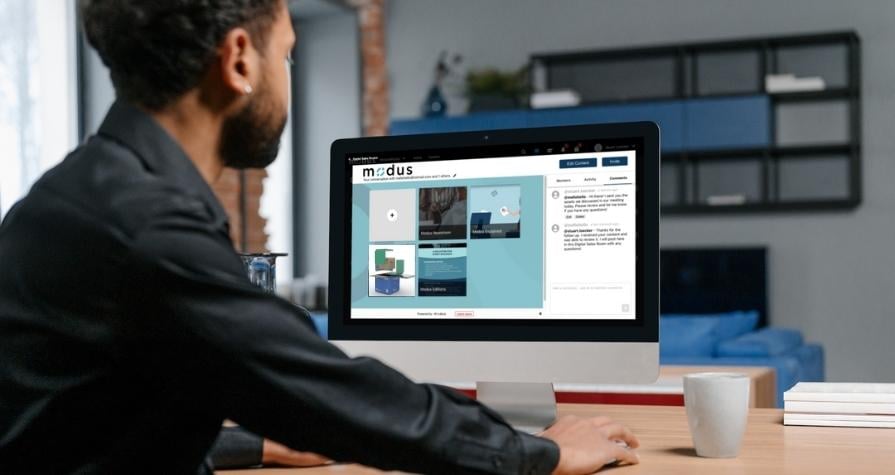The B2B buying environment has changed drastically over the past few years. One of the biggest changes? Buyers are bypassing sales reps altogether, and turning to self-service digital research from a variety of business sources like blogs, webinars, podcasts and peer-review sites. A study from McKinsey backs this up with findings that 70%-80% of today’s prospects prefer remote interaction or digital self-service.
This makes it increasingly difficult for sellers to engage with these data-loaded buyers. It's essential for sales teams to be ready to adapt within this new digital buyer environment in order to accelerate and close deals.
Engaging with the Digital Buyer
Although the buying approach has changed, prospects still have the same types of problems they've been trying to solve—and sellers still need to pinpoint the business pains extensive enough to invest the time and resources to fix it. Sellers also need to prove that their particular solution is the right one that will give buyers a good return on their investment.
But with the current state of self-servicing buyers, it can be a challenge to reach these individuals, and to understand where they are in their buying journey. Every connection a seller makes with a buyer needs to do a few things:
- Meet the buyer where they are.
- Deliver value via relevant content.
- Build trust and serve as an advisor, rather than a salesperson.
- Lead the buyer to a decision.
In a recent Gartner Digital Buying survey, 60% of buyers are considered "digital buyers" as opposed to traditional buyers. Their preference is to spend more time doing their own research rather than working with a seller. They are typically far along in the buying process when they finally decide to connect with a seller—and oftentimes overwhelmed and/or frustrated with conflicting information.
The Role of the Seller
Good times to be in sales, right? It’s the job of the seller to help buyers understand the purchase process, to encourage and to inform them of failure paths, and lastly to celebrate successes. The goal here is not to "sell your product," but to solve the buyer’s business problem.
And it doesn’t have to be hard. With the right tools and technology, reps can be confident—and equipped to meet these buyers where they are.
Gartner boils down what this means. Their research suggests sellers need to create highly personalized digital experiences where they mediate the buying process on behalf of the buyer. The content and resources shared by sellers should enhance and clarify the buyer’s research into meaningful information that can be shared with other stakeholders at the buying table. Ultimately, the seller helps to build the buyer's confidence so they’re comfortable making a purchase decision.
A Digital Buying Scenario
So what does this look like? You could schedule a demo to see it real-time, but we’ll take you through a scenario:
Your rep is preparing for a meeting with a prospect. You’ve equipped this seller with a content platform that has access to resources that are easily found and consumed. The seller has done their research, and has a good idea of what information would best serve their prospect.
They pull that information together in a Collection, or a "digital briefcase," specific to this buyer. Content within the Collection could be anything from a ROI tool for problem assessment, a presentation showing buyers the art of the possible, or capability-highlighting videos. It's all at the ready to build trust, add value, and engage that buyer.
Everything can be shared with the click of a button, creating an immersive digital experience—or what we call a Digital Sales Room (DSR). This is a secure, virtual microsite where B2B sellers can collaborate with their buyers and move them along in the buying journey. (And according to Gartner—by 2025, 30% of all deals will run through a Digital Sales Room.)
Buyers love DSRs because everything they need is located in a central space that’s easily accessible. They're also easily shareable to onboard new buyer stakeholders, needed to make a decision. Buyers can choose to add to the DSR too, and engage with sales reps at their own convenience.
As buyers become more informed, they become more confident—which is the surest road to a purchase decision. Sellers get benefits too. They’re able to see when the prospect accesses or shares information in the DSR, providing insightful buyer intent information along the way.
A Digital Buying Case Study
We've seen the impact DSRs can make for so many of our customers. One forward-thinking company that's seen amazing success with their sales team is Cold Chain Technologies (CCT). They leveraged Modus DSRs to engage with their buyers, while helping sales reps understand more about their prospects' interests and intent.
CCT reports they've seen a direct correlation between the power users of the platform and top sales quarter over quarter (i.e., the top seller is the top user of Modus). Phenomenal results!
To learn more about CCT's success (including a 50% reduction in sales cycles for sellers using Modus), click on the case study below.



